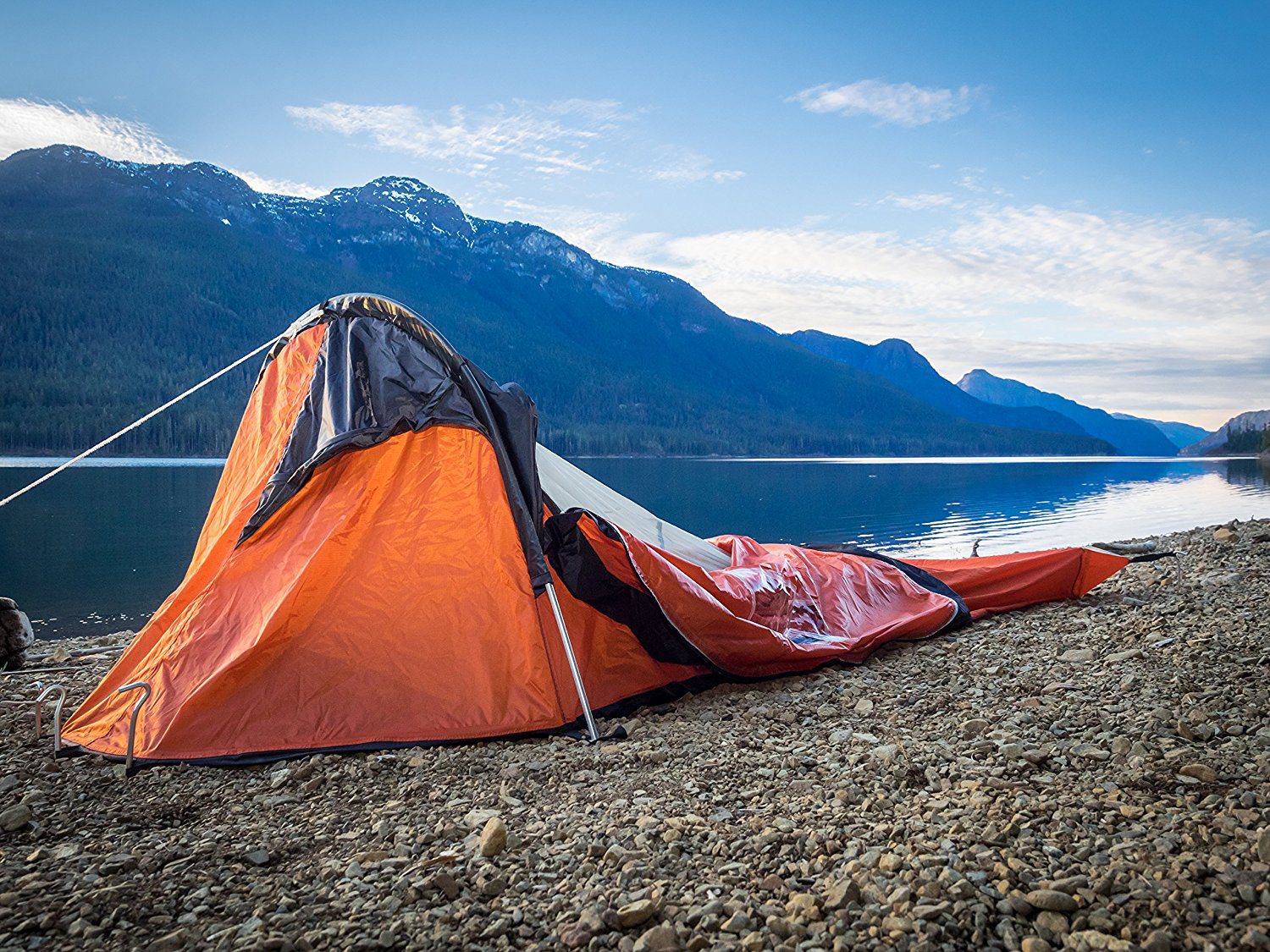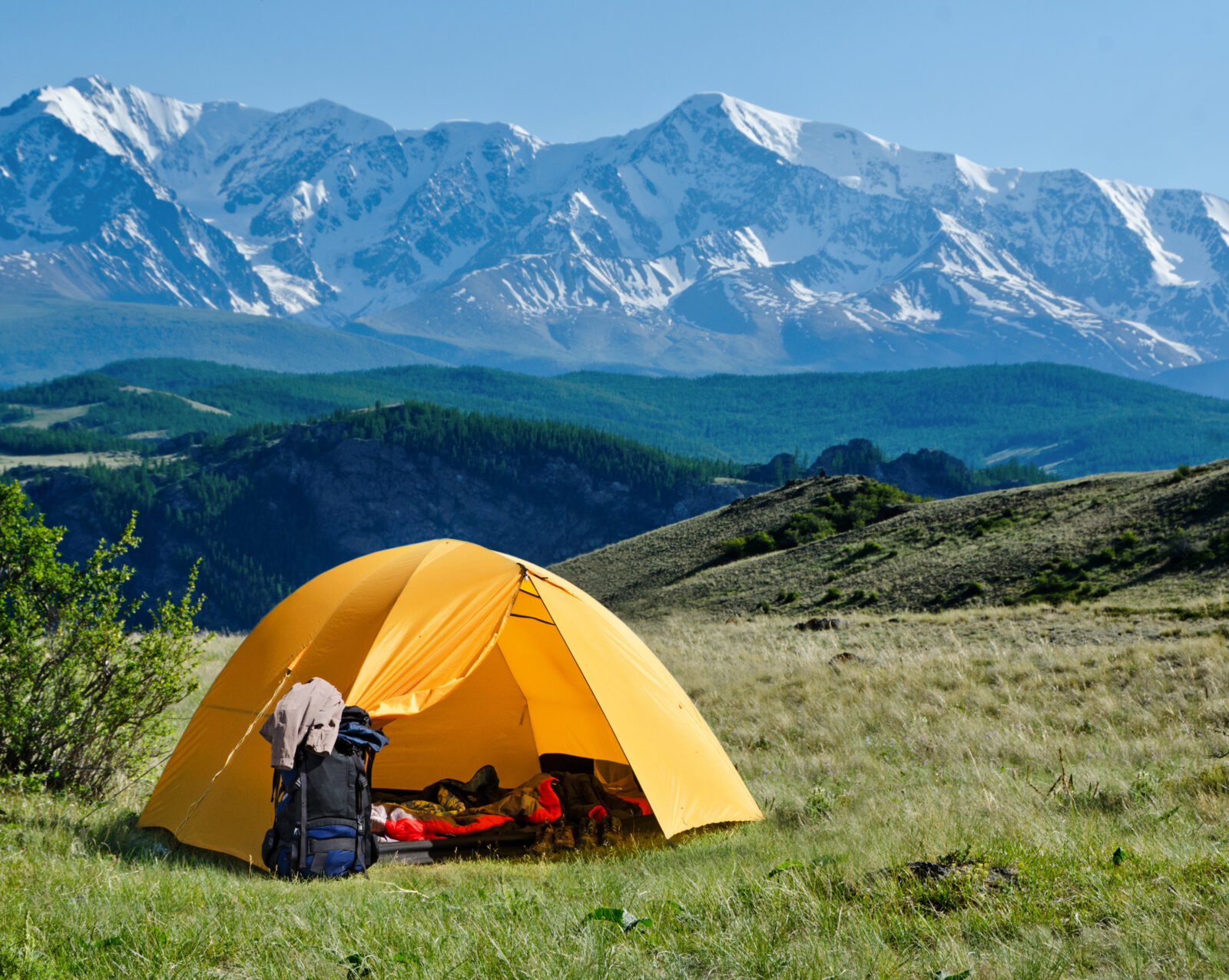Sick of carrying a heavy pack on your camping trips?
We know how you feel.
After years of lugging around an unnecessarily heavy hiking backpack, we’ve taken the leap into the world of lightweight camping, and we want to help you do the same thing.
However, packing light on a camping trip doesn’t have to be impossible. To help you figure out how to pack light for your next camping trip, we’ve put together a list of 10 questions to ask yourself during the packing process.
In this article, we’ll walk you through the thought process of prepping for a lightweight camping trip. That way, you can minimize your gear and maximize your adventure during your next trip to the mountains.
1. Are you willing to do some extra planning?
Before we dive into some of the more specific things you ought to consider when planning a lightweight trip to a beautiful place like Cuyahoga National Park, you need to ask yourself if you’re okay with doing a bit of extra planning before your adventures.
In reality, any good outdoor expedition requires at least a small amount of pre-planning. But, ultralight backpacking trips to Zion and even lightweight car camping adventures to Yosemite necessitate even more in terms of preparing for any eventuality before you leave home.
Indeed, we often find that people overpack for their outings simply because they opt to bring all the gear that they own on every trip, rather than trimming down their gear list to the bare necessities.
By spending an extra few hours on planning during your pre-trip packing routine, you can actually eliminate redundancies in your gear system and minimize your pack weight, all in one fell swoop.
2. How much do you value comfort and luxury?
As soon as you’ve decided that you’re okay with putting in the extra time to plan a lightweight trip, it’s time to figure out how lightweight you’re willing to go. Or, in other words, it’s time to figure out your lightweight backpacking comfort zone.
Your lightweight backpacking comfort zone is an approximate pack weight range that allows you to hike and enjoy the great outdoors without sacrificing too much in terms of your comfort on the trail.
For some people, this comfort zone might be a base pack weight of about 20 lbs (9.1 kg), and for others, it might be a base pack weight of 5 lbs (2.3 kg). The goal isn’t to have the lightest gear, but to have the pack weight that’s suitable for your needs.
Of course, any lightweight trip, whether that’s to Yellowstone or Death Valley, requires sacrificing some comfort. So, if you’re interested in maintaining a high level of comfort and luxury during your camping trips, you may have to be more realistic about what kind of pack weight you can actually achieve.
3. Are you able to make an investment in your gear?
Fact : Lightweight camping gear isn’t cheap.
Whether you’re interested in packing an ultralight backpacking chair or a highly compact first aid kit, you’ll likely have to make a decent financial investment in your equipment if you really want to trim down your pack weight.
That being said, you shouldn’t be completely put off by the idea of lightweight backpacking if you have a small budget. However, folks on a tighter budget need to be more aware of what gear is worth investing money in and what’s okay to compromise on as they start the lightweight backpacking planning process.
Read More : 5 Things to Know Before Buying Used Camping Gear
4. Do you have a lightweight shelter?
Out of all of the gear you might bring with you while camping, your shelter is likely to be the heaviest and bulkiest item in your pack.
Indeed, since many tents can weigh well over 5 lbs (2.3 kg) when packed up, finding a way to trim weight off your shelter system is of the utmost importance. To do so, you’ll first need to consider what type of shelter is best for your needs.
For many lightweight hikers, a compact 2 person tent is more than sufficient for their adventures. But, people who want to really go lightweight during the summer months might opt for a hammock with a hammock tarp, instead.
Alternatively, hikers who are particularly keen on minimizing their pack weight might ditch the hammock and tent lifestyle entirely and sleep under a camping tarp.
Regardless of what option you choose, however, the key thing is that you minimize your shelter’s weight to no more than about 3 lbs (1.4 kg) for a 2 person group for maximum weight savings in the mountains.
5. Can you trim down your kitchen gear?
In addition to minimizing the weight of your shelter, you’ll also want to think long and hard about the weight of your kitchen equipment.
Although packing plenty of kitchen gear, like cookwares, mess kits, and even a camping table, is important if you want to enjoy some gourmet grub in the backcountry, doing so isn’t exactly conducive to minimizing your pack weight.
As a result, many lightweight campers opt to bring a small, highly portable camp stove on their travels.
Or, if you’re okay with doing a bit of extra work during your trip, you could make a plan to cook over a fire each night using tinders, lighters, and firestarters to help you along the way. Do keep in mind, though, that fires aren’t allowed in all camping areas.
So, check local regulations before diving straight into the world of cooking over an open flame.
6. Have you weighed your clothing?
More often than not, we lightweight hikers spend so much time focused on our big-ticket items, like our 4 person tents and summer sleeping bags, that we neglect the extra weight that we carry around in our packs in the form of spare hiking clothing.
As a result, it can often be both enlightening and helpful to weigh all your hiking clothing when packing for a trip.
Figuring out precisely how much your rain jacket and rain pants weigh can help you determine if it’s time to invest in a lighter set of waterproof gear.
Or, weighing your gear could help you realize that your synthetic puffy jacket is weighing you down, which could encourage you to make the switch to a lightweight puffy alternative.
Read More : Down vs Synthetic Insulation – Which One Is Better?
7. Did you check the weather?
As we’ve mentioned, hiking clothing can often add a whole lot of weight to your pack while you’re in the mountains. Therefore, checking the weather before your trip and packing accordingly could save you quite a few pounds in your pack on the trail.
For example, if you check the weather for your trip to Sequoia and Kings Canyon National Park and find that the day and nighttime temperatures are going to be very warm, you might consider packing lightweight hiking shorts rather than heavy hiking pants.
Or, if you notice that the weather will be cold and snowy during your trip to Glacier National Park, you’ll be in a better position to make an educated decision about what type of gear is appropriate for your travels.
In this situation, you’ll certainly need to pack a winter sleeping bag and warm clothing, like hiking gloves. But, checking the weather frequently can help you decide whether that extra clothing is necessary or whether you can pack just 1 extra layer, rather than 2.
Read More : How to Layer Effectively for Camping in Cold Weather
8. Can you eliminate redundant gear?
In an attempt to prepare for any eventuality, we hikers often pack a lot of extra gear. While this is great from a risk management perspective, it’s important to remember that there are often ways to reduce your pack weight without compromising safety.
In particular, hikers should find ways to eliminate redundant gear from their packing lists. Although you should never nix emergency supplies, like survival gear from your pack, you can ask yourself if you truly need 4 pairs of hiking socks or if 2 pairs will suffice.
These little things might not seem like much now, but they all add up on the trail to help save weight in your pack.
9. Do you have a buddy for your adventures?
Camping with friends is usually a fun and exciting way to spend quality time together in the great outdoors. Plus, as an added bonus, camping with a buddy can also help you both lower your total pack weights.
In fact, while you’ll each need to pack personal items, like your own sleeping pad and mess kits, bringing a friend means you can split the weight of group gear, like your coffee maker.
Doing so can keep everyone’s pack weight at a minimum without requiring that you sacrifice any gear in the process. What could be better?
Read More : How to Plan A Successful Camping Trip with Friends
10. Did you pack a luxury item?
Last but not least, it’s always important to remember that we humans love our creature comforts – even when we’re deep in the backcountry. Therefore, we always recommend packing a luxury item on your travels.
Gaby Pilson
Gaby is a professional mountain guide with a master’s degree in outdoor education. She works primarily in the polar regions as an expedition guide, though she can be found hiking, climbing, skiing, sailing, or paddling in some of the world’s most amazing places when not at work.


